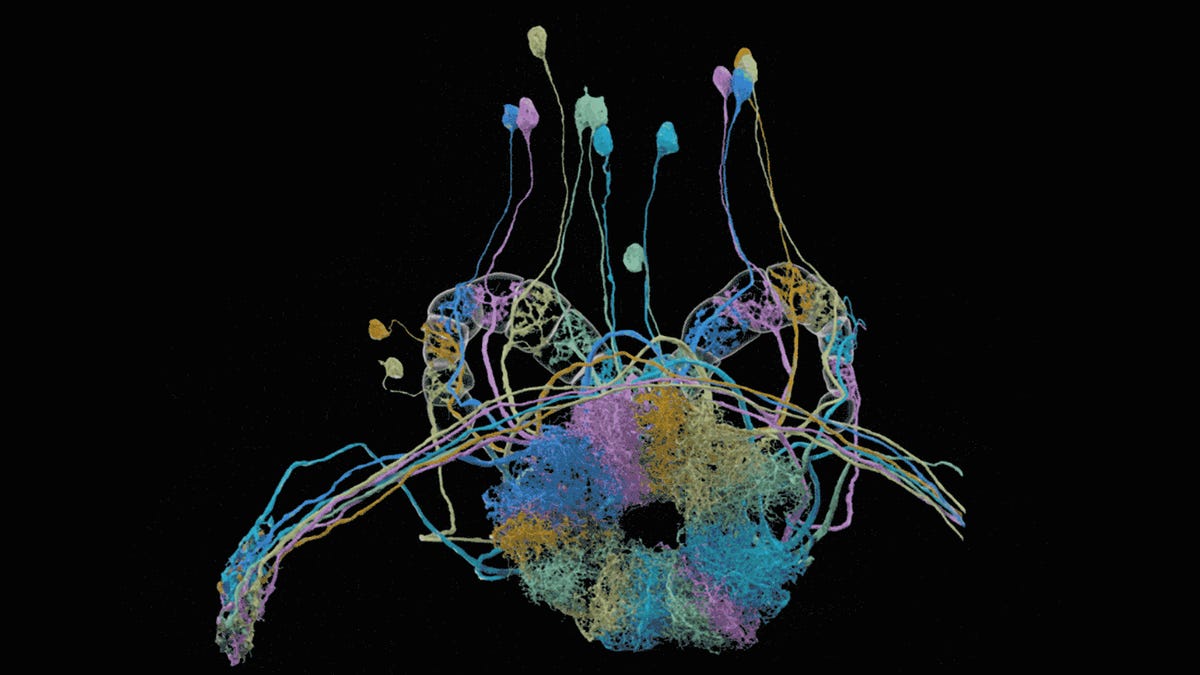Google's giant map of brain connectivity is a beautiful tangled mess
The images created by researchers from Google and elsewhere will help scientists learn about the brain circuits that control learning, memory and other behaviors.

Researchers from Google and Janelia Research Campus made a complex map of the brain of a fruit fly.
Tiny brain, big science: Researchers from Google and the Howard Hughes Medical Institute's Janelia Research Campus have created an in-depth 3D map of a fruit fly's brain, which they say could teach us more about how the organ controls learning, memory and other behaviors. It's the largest brain map of this type -- called a connectome -- ever created, for any animal, according to the research project website and a paper describing the work.
The map covers a large portion of the fly's brain, including the circuits used for learning, navigation, visual processing and possibly sleep, says the paper. It includes about 25,000 neurons, along with 20 million chemical synapses found between them, and it required complex imaging technology and deep learning algorithms, according to an article from the research campus.
The project's data is free for anyone to download. You can find more videos of the map in action on the project website.
Originally published Jan. 22, 10:38 a.m. PT.

